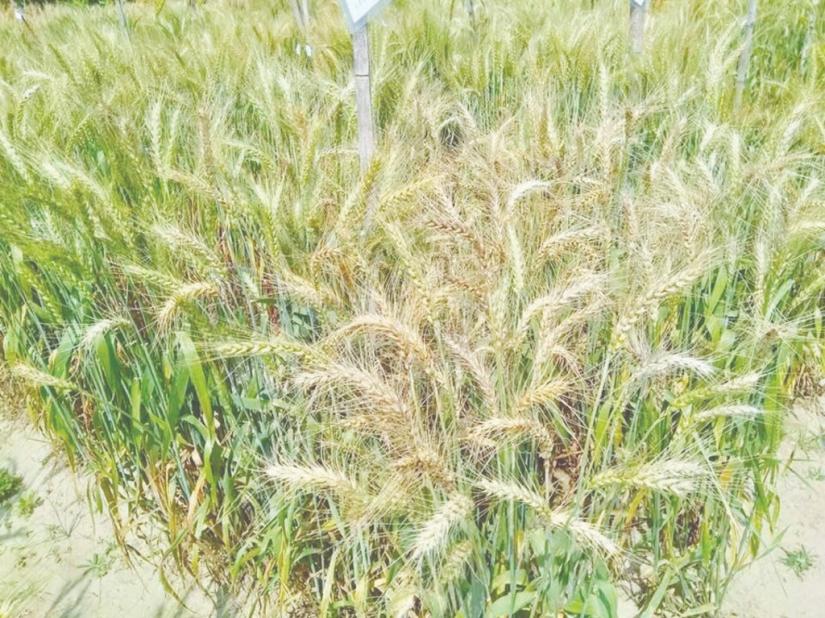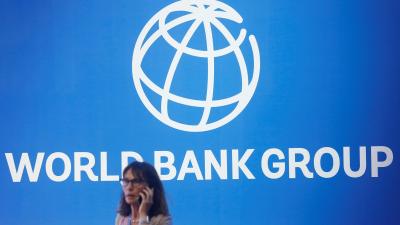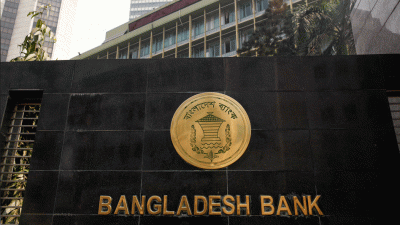 Bangladesh is bracing for a bad wheat year as growers of the country’s second most important food cereal have cut the crop’s acreage by a sixth.
Bangladesh is bracing for a bad wheat year as growers of the country’s second most important food cereal have cut the crop’s acreage by a sixth.
With this year’s harvesting season about to begin, the United States Department of Agriculture (USDA) says in a commodity assessment report that wheat farmers in Bangladesh reduced cultivation area to 2.9 lakh hectares, 17.38 percent lower than planted wheat area in the last fiscal.
As a result, the wheat output, USDA fears, may go down to just 9.5 lakh metric tons (MT), a record low in a decade.
The slump is attributed to recurrent wheat blast panic, changing weather conditions from a long to short winter period, and opportunities to cultivate alternative profitable crops.
Bangladesh’s wheat production continues to fall since the deadly fungal disease blast struck the country’s southwestern wheat fields in its first Asian outbreak in 2016. Previously, wheat blast was a concern only for farmers in South America.
The country’s wheat output dropped from 12.5 lakh MT in 2016-17 to 11.5 lakh MT in 2017-18 as wheat acreage was reduced as well, from 4.05 lakh hectares to 3.5 lakh hectares.
But in the current fiscal, the USDA report says, farmers have further shifted from growing wheat, thereby reducing the acreage to 2.9 lakh hectares only and it will fetch only 9.5 lakh MT of wheat yield.
The government’s wheat reserve in December, 2018, was as low as 1.8 lakh MT, 41 percent lower than the same period in the previous year. It has now further eroded to 1.4 lakh MT, confirmed Food Ministry statistics.
This has prompted the government to float two international tenders in quick succession over the past two weeks, seeking to replenish the rapidly dwindling wheat stock.
Bangladesh’s dependency on wheat imports is rather dramatic. The country, which used to import less than 20 lakh MT of wheat prior 2012-13, now has emerged as one of the world’s top wheat importing nations, with yearly import volume expected to hit 65 lakh MT this year.
Official statistics show the country has already imported nearly 40 lakh MT of wheat in the first eight months of the current fiscal.
Domestic wheat production hit a record high of 19 lakh MT in fiscal 1998-99. But later, acreage and production began to fall gradually as many farmers switched over to other crops such as maize, potato, and vegetables that fetch higher profits.
Naresh Chandra Deb Barma, who heads the Bangladesh Wheat and Maize Research Institute, told this correspondent: "We're trying to increase domestic production, develop better breeds and increase the crop's acreage."
He said, as an answer to wheat blast, the Wheat Research Centre (now upgraded to an institute) has released a resistant variety, ‘BARI Gom 33’.
Also, some scientists from the United Kingdom who are working in collaboration and Bangladesh told Dhaka Tribune that genome editing applications are underway to develop a novel variety capable of withstanding the fearsome fungal disease of wheat blast.
 Business
Business
30740 hour(s) 45 minute(s) ago ;
Afternoon 03:40 ; Friday ; Apr 19, 2024
Bangladesh braces for bad wheat year
Send
Reaz Ahmad
Published : 00:36, Mar 17, 2019 | Updated : 00:38, Mar 17, 2019
Published : 00:36, Mar 17, 2019 | Updated : 00:38, Mar 17, 2019
0 ...0 ...
/hb/
Topics: Top Stories
- KOICA donates medical supplies to BSMMU
- 5 more flights to take back British nationals to London
- Covid19: Rajarbagh, Mohammadpur worst affected
- Momen joins UN solidarity song over COVID-19 combat
- Covid-19: OIC to hold special meeting
- WFP begins food distribution in Cox’s Bazar
- WFP begins food distribution in Cox’s Bazar
- 290 return home to Australia
- Third charter flight for US citizens to return home
- Dhaka proposes to postpone D8 Summit
Unauthorized use of news, image, information, etc published by Bangla Tribune is punishable by copyright law. Appropriate legal steps will be taken by the management against any person or body that infringes those laws.
Bangla Tribune is one of the most revered online newspapers in Bangladesh, due to its reputation of neutral coverage and incisive analysis.
F R Tower, 8/C Panthapath, Shukrabad, Dhaka-1207 | Phone: 58151324; 58151326, Fax: 58151329 | Mob: 01730794527, 01730794528






